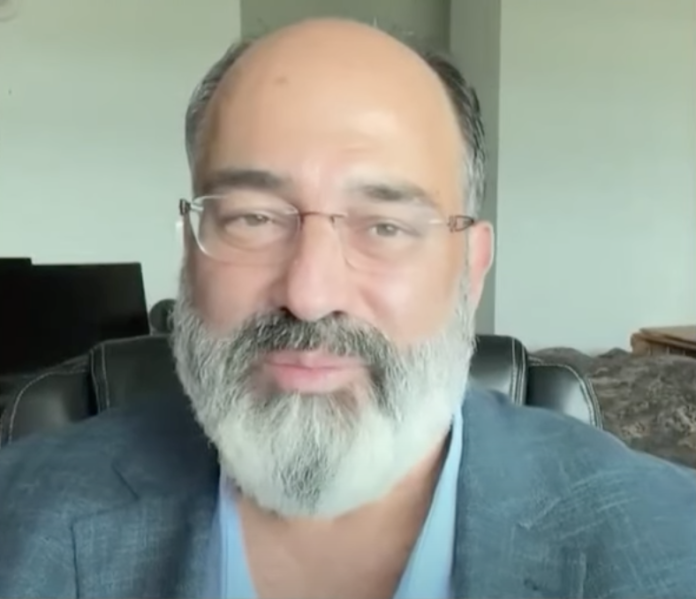The MoneyTalk portfolio: Out with the old, in with the new
Lightly edited transcript:
Kim Parlee: I got a little nervous when I heard about this bill saying that you’re going to shut the portfolio down, but it’s because you’re retiring it and starting a new one. Give us some history here.
Phil Davis: We’re at the top of an epic run in the markets, and if you’re not going to cash out when you’ve made ridiculous amounts of money, when are you going to take the money off the table? It’s a good time, especially for a portfolio like this which is very low touch. We only adjust quarterly when we’re on the show. I don’t want to take a chance going into the winter, going into the elections, and everything else. We don’t know what’s going to happen, so it’s best to take the money off the table. We’re up 381% since November 2019, so that’s five years – about 76% per year on average. We’re not sure going forward enough to risk what is now a $400,000 portfolio.
This is true for anybody who has huge gains in the portfolio. Take it off the table once in a while, reduce your risk by simply putting the money into something steady and safe. We’re going to start with a brand new $100,000 portfolio and start populating it right away. It’s great for new traders also, so people who feel like they missed out on the first run can now start and we can demonstrate how to build a portfolio, how to select stocks, how to use options, that kind of stuff.
Kim: Let’s start with gold. Tell us why gold, and then we’ll talk about the specific trade.
Phil: We’re looking at Barrick Gold, which is the world’s largest gold miner. When you buy a gold miner, you’re buying gold, but instead of buying a lump of gold and putting it somewhere, you’re buying a company that already owns 76 million ounces of gold in the ground. That’s leverage. When the price of gold goes up, the gold gets more valuable, and the company makes more money mining and selling the gold. If gold doesn’t go up or down, you still own a business that mines, produces, and sells gold, which makes a profit on a regular basis.
Kim: Let’s talk about the actual play itself.
Phil: As we like to do with most stocks when we start off small, we like to sell some puts. We’re going to sell five of the $20 puts for $3.50, that puts $1,750 in our pocket. Then we’re going to use that money towards purchasing a bull call spread where we buy 20 of the December 2026 $17 calls and sell 20 of the December 2026 $22 calls. It’s a $5 spread that’s going to net us in at $2,550. It’s already $6,000 in the money, and it’s a $110,000 spread. If Barrick Gold goes up to $22 over the next 17 months, we’re going to make a profit of $7,450.
Kim: The risk in this one is that you’re going to own Barrick Gold, correct?
Phil: Correct. Selling the puts is an obligation that you take on saying you will buy Barrick Gold for $20 a share between now and January 2026. Obviously, if Barrick Gold goes down to $10, you still have to buy it for $20. You’ll take a $10 loss, which in this case would be about $5,000. We don’t think that’s likely, and it’s really no worse than if you own the stock and the stock goes down.
Kim: Let’s get to the next one, Barclays.
Phil: Barclays is down at $11-12. We’re going to sell 20 of the January 2026 $12 puts. That generates $3,500 for promising to buy it. We’re promising to buy 2,000 shares of Barclays at $12. They’re giving us $1.75, so our net entry is $10.25. We’re using that money to buy 40 of the 2026 $10-$12 spread. It’s an $8,000 spread that we’re buying for a net of $500 out of pocket.
Kim: And the last one we have time for, Invesco.
Phil: Invesco is an ETF marketer. We’re selling 10 of the $20 puts of the 2026s and buying the $15-$20 spreads. Invesco is around $16 right now, so it’s a little aggressive, but we think they’re tremendously undervalued. We’re spending net $1,750 on a $10,000 spread, so that’s $8,250 upside, which is 471% upside to the cash in 17 months. It’s aggressive, we think Invesco is very undervalued.
Kim: And again, I just want to remind people that you’ve got to be ready to pick up those shares if the obligation comes to you, and that’s just something that people have to be ready to do and do their own research.
Phil: Absolutely. Never sell a put on a stock that you don’t really want to buy for that price. If you don’t really want to buy for that price, what’s going to happen is if there’s a downturn, you’ll panic and try to get out at the wrong time, and you won’t hold your position. It ends up being a worst-case scenario.



